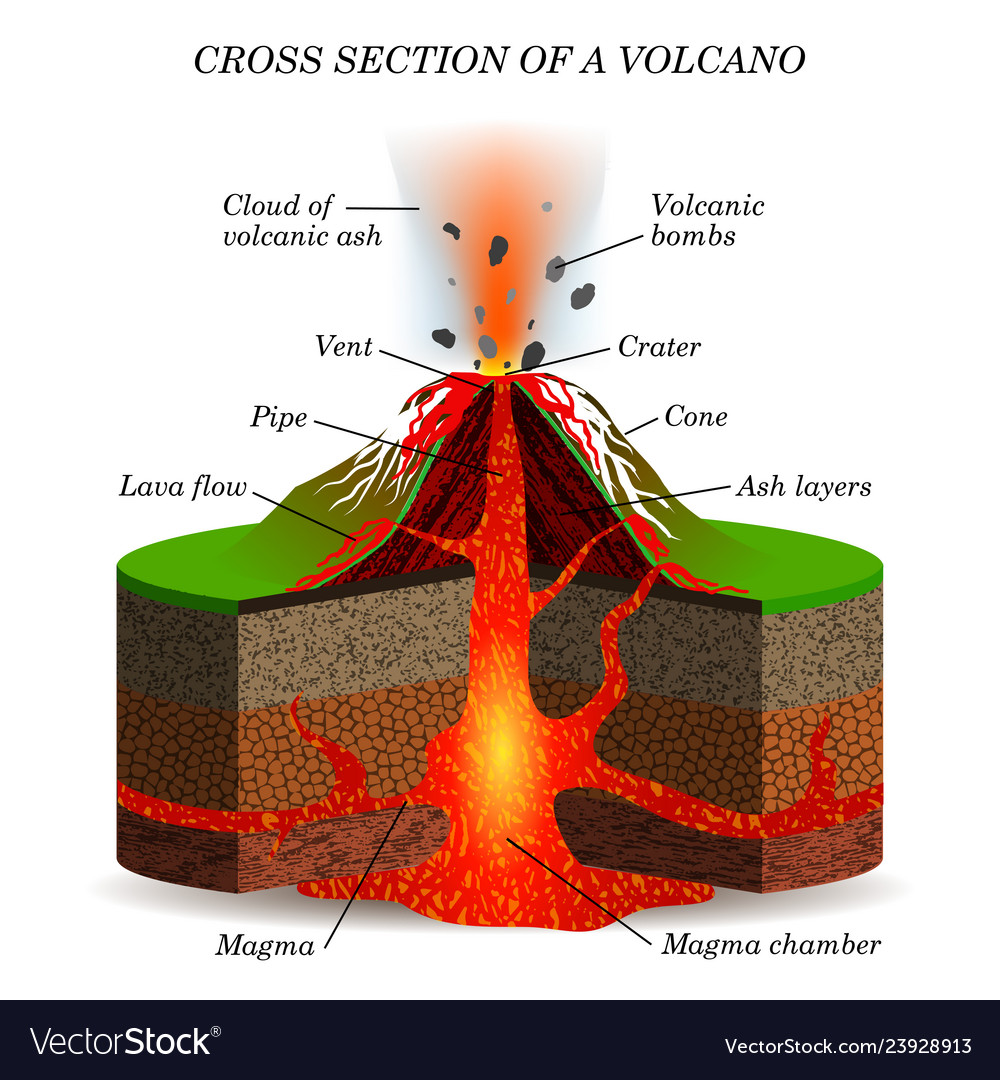
volcano cross section drawing outdoorweddingoutfitideasguest
Volcanology is the scientific discipline that focuses on the study of volcanoes, volcanic processes, and the related phenomena that occur within the Earth's crust. It encompasses a wide range of scientific fields, including geology, geophysics, geochemistry, and more. Volcanologists study the behavior, formation, eruption mechanisms, and.
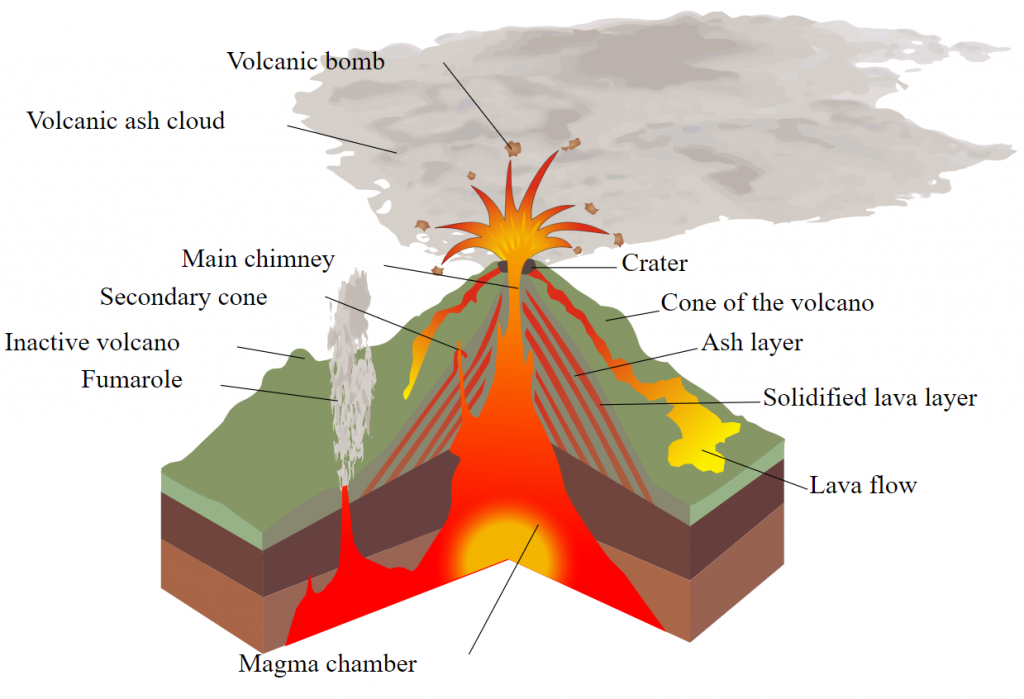
4.5 Volcanism Physical Geography and Natural Disasters
Volcanoes have long intrigued the world. They are scary and fascinating. Learn the parts of a typical volcano in this informative video. This is part 2 in a.
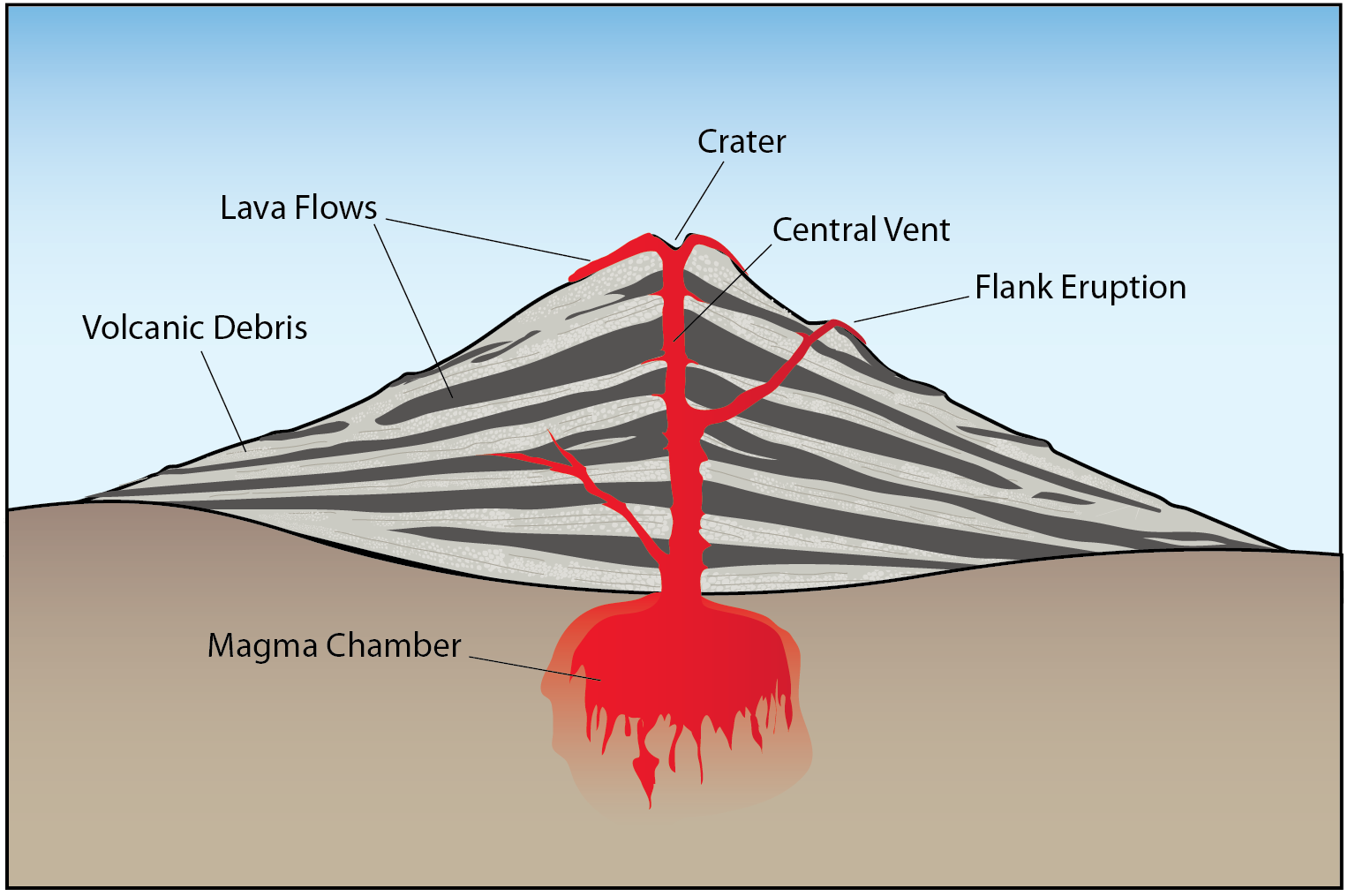
Anatomy Of A Volcano anatomy diagram source
A collapsing column of ejected ash and gas from the Hunga volcano caused damaging submarine currents in 2022. In December 2021, an undersea volcano in the southern Pacific Ocean, the Hunga Tonga-Hunga Ha'apai (hereafter called the Hunga volcano) began erupting. In January 2022 the eruption reached a powerful climax, triggering atmospheric.

The Amazing of the Volcano
Craters and Other Volcanic Features reveals volcanoes' anatomy and describes major volcanic features found in national parks. Lava Flows and Other Volcanic Deposits describes the different types of lava flows and pyroclastic deposits as well as their characteristics and features.
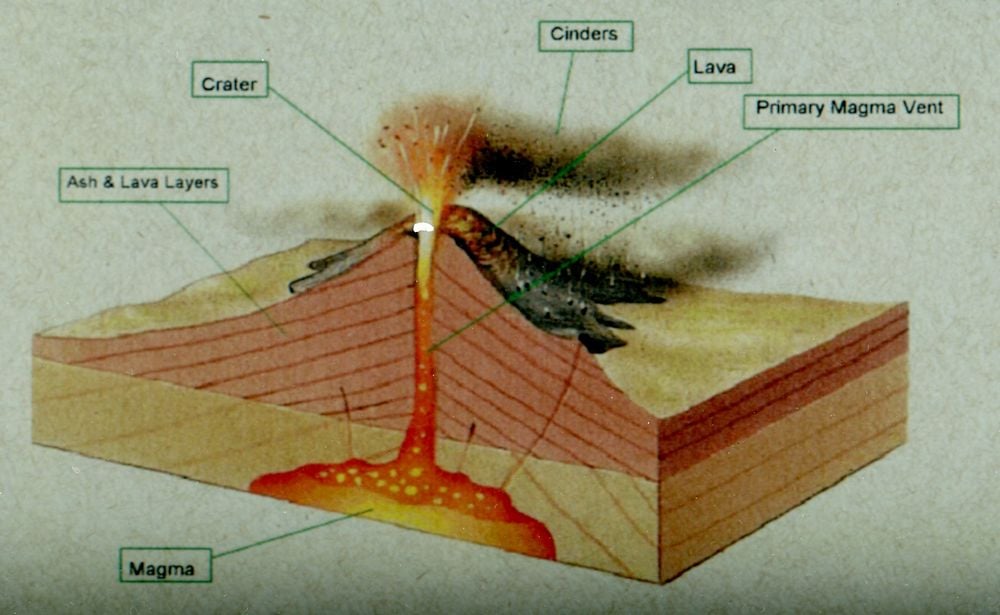
Anatomy of a Volcano Display
Learn about the major types of volcanoes, the geological process behind eruptions, and where the.

Year 8 geography Anatomy of a volcano Diagram Quizlet
But do you know the anatomy of a volcano? From tephra to volcanic bombs, it's time to explore the 13 parts of a volcano. Let's dive right in. 1. Magma When rocks become so hot, they can become a substance called magma. It collects in magma chambers on average 1 to 10 km below the surface.
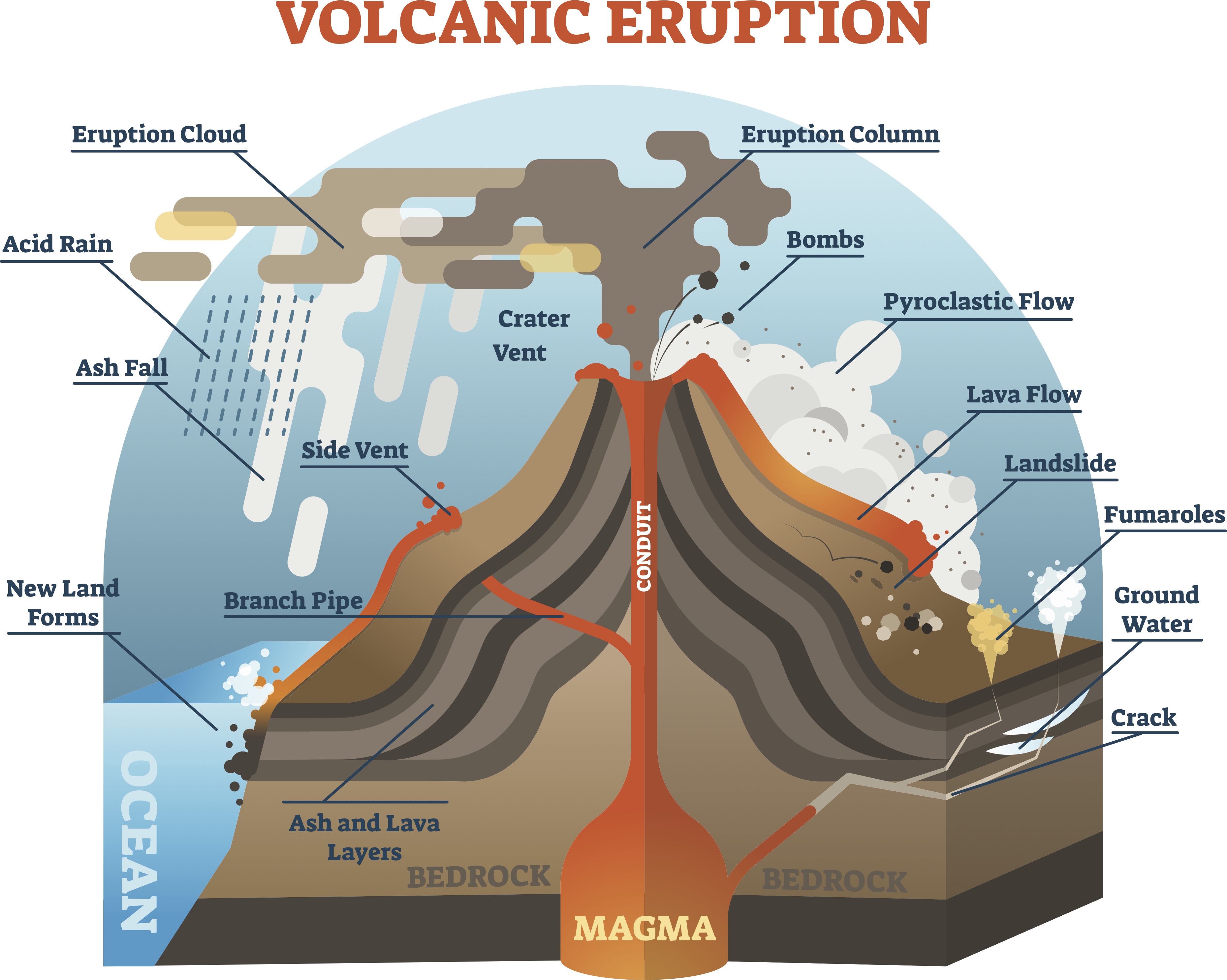
12+ Volcanic Eruption Diagram Robhosking Diagram
This magma surges through the surface of the earth, then solidifies, resulting over time in a classic volcano cone. — Lexi Krock Note: Some of the text in this feature is adapted from materials.

Volcanoes Infographic Science infographics, Volcano, Earth and space science
The structure of a volcano grows with every eruption. Below the surface, lava is called magma and builds up in underground reservoirs. Magma and other volcanic materials are channeled to the surface where they are expelled through a crack or hole. The main parts of a volcano include the magma chamber, conduits, vents, craters and slopes.
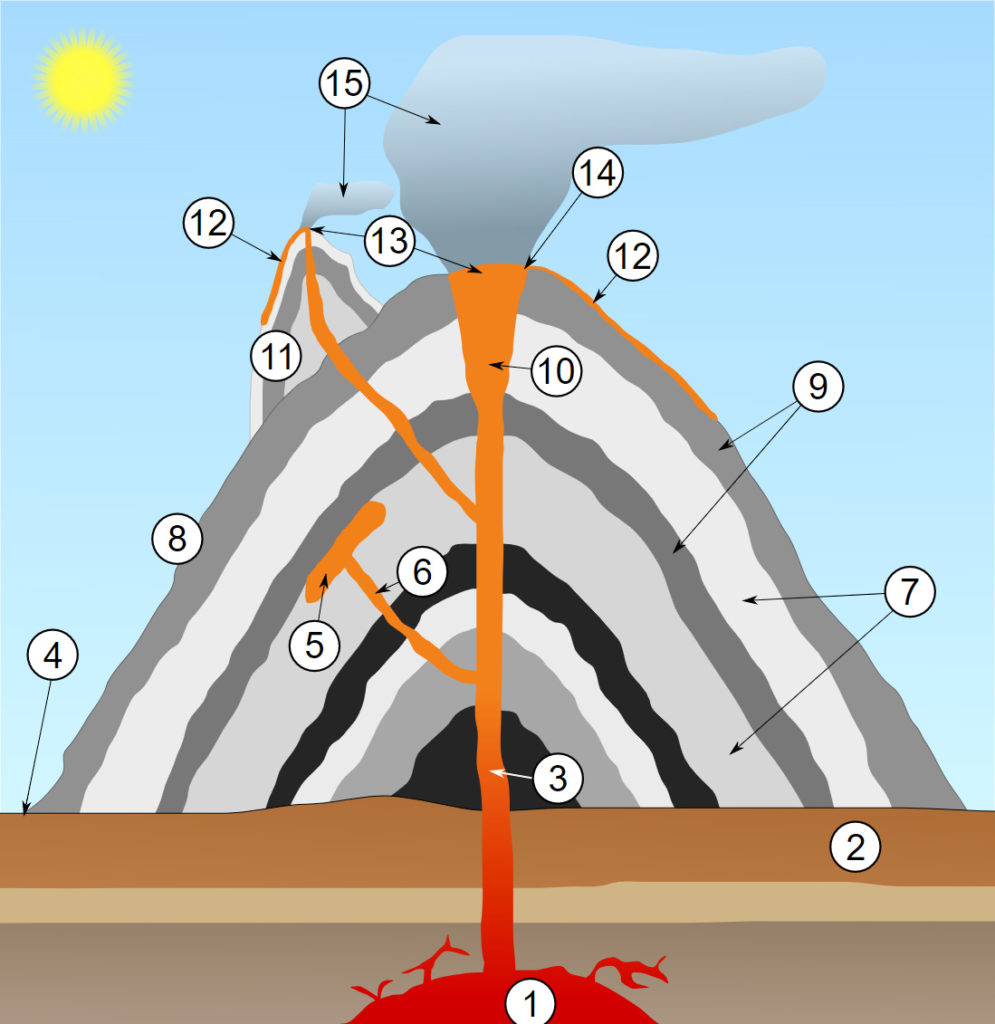
Partes de un volcán Conociendo la anatomía de un volcán NeoTeo
Anatomy of a Volcano What's the difference between lava and magma? What are volcanic vents, dikes, and fissures? In this anatomy of a volcano, explore the basic geological features of a.
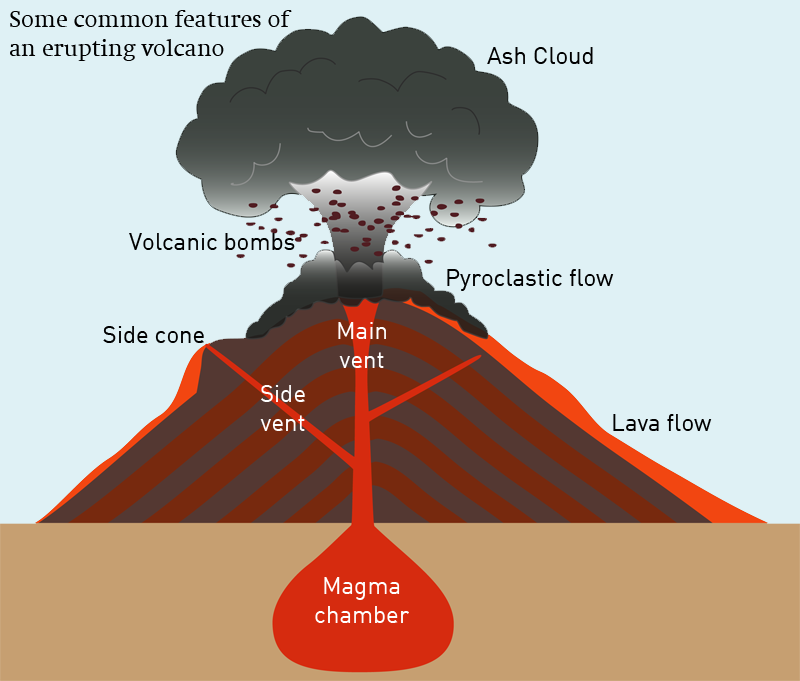
Shetland's volcano Shetland Amenity Trust
Anatomy of a Volcano All volcanoes have some things in common: Did you know? What is the difference between magma and lava? Magma is molten rock stored in the Earth's crust. Lava is molten rock that has reached the Earth's surface through a volcanic vent. Where volcanoes are found The lithosphere is the outermost layer that surrounds the Earth.

Anatomy of a Volcano Poster Zazzle Volcano, Earth science classroom, Anatomy
volcano, vent in the crust of Earth or another planet or satellite, from which issue eruptions of molten rock, hot rock fragments, and hot gases. A volcanic eruption is an awesome display of Earth's power. Yet, while eruptions are spectacular to watch, they can cause disastrous loss of life and property, especially in densely populated.

Potter's Geography Features of a Volcano
Fissure. On volcanoes, a fissure is an elongated fracture or crack at the surface from which lava erupts. Fissure eruptions typically dwindle to a central vent after a period of hours or days.
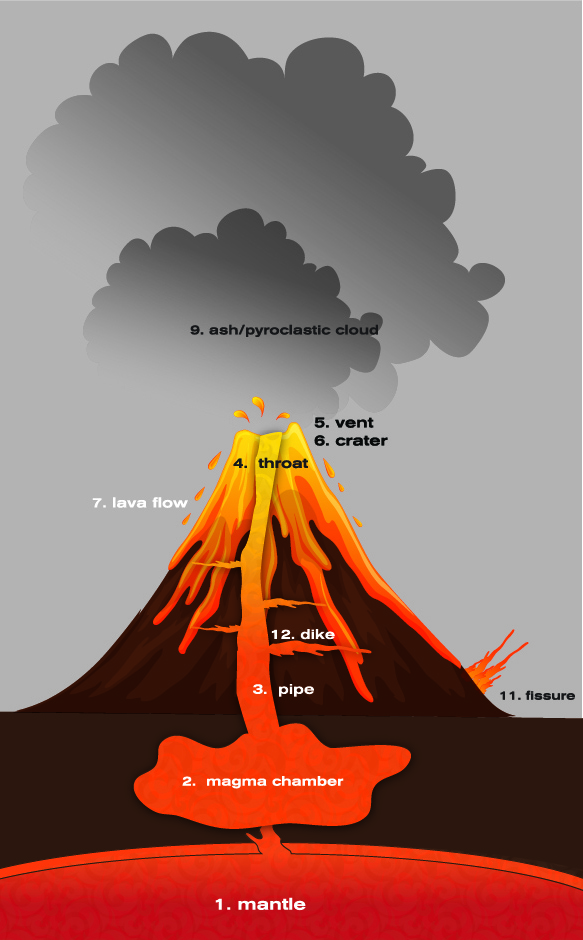
Volcano Anatomy Graphic Volcano Hopper
Introduction Volcanoes are both the vents where molten rock material and volcanic gases are erupted from within Earth's interior, and the cones and mountains built up around those vents. But beyond this simple definition, volcanoes are incredibly diverse with some types being very complex.
Volcanoes 8th Grade Science with Mrs. Lewis
A volcano is an opening in a planet or moon's crust through which molten rock, hot gases, and other materials erupt. Volcanoes often form a hill or mountain as layers of rock and ash build up from repeated eruptions. Volcanoes are classified as active, dormant, or extinct. Active volcanoes have a recent history of eruptions; they are likely.

13 Parts of a Volcano The Anatomy of Volcanoes Earth How
The familiar cone-shape of many volcanoes are an indication of this, the point at which ash, rock and lava ejected during an eruption fall back to Earth around the vent to form a protrusion..
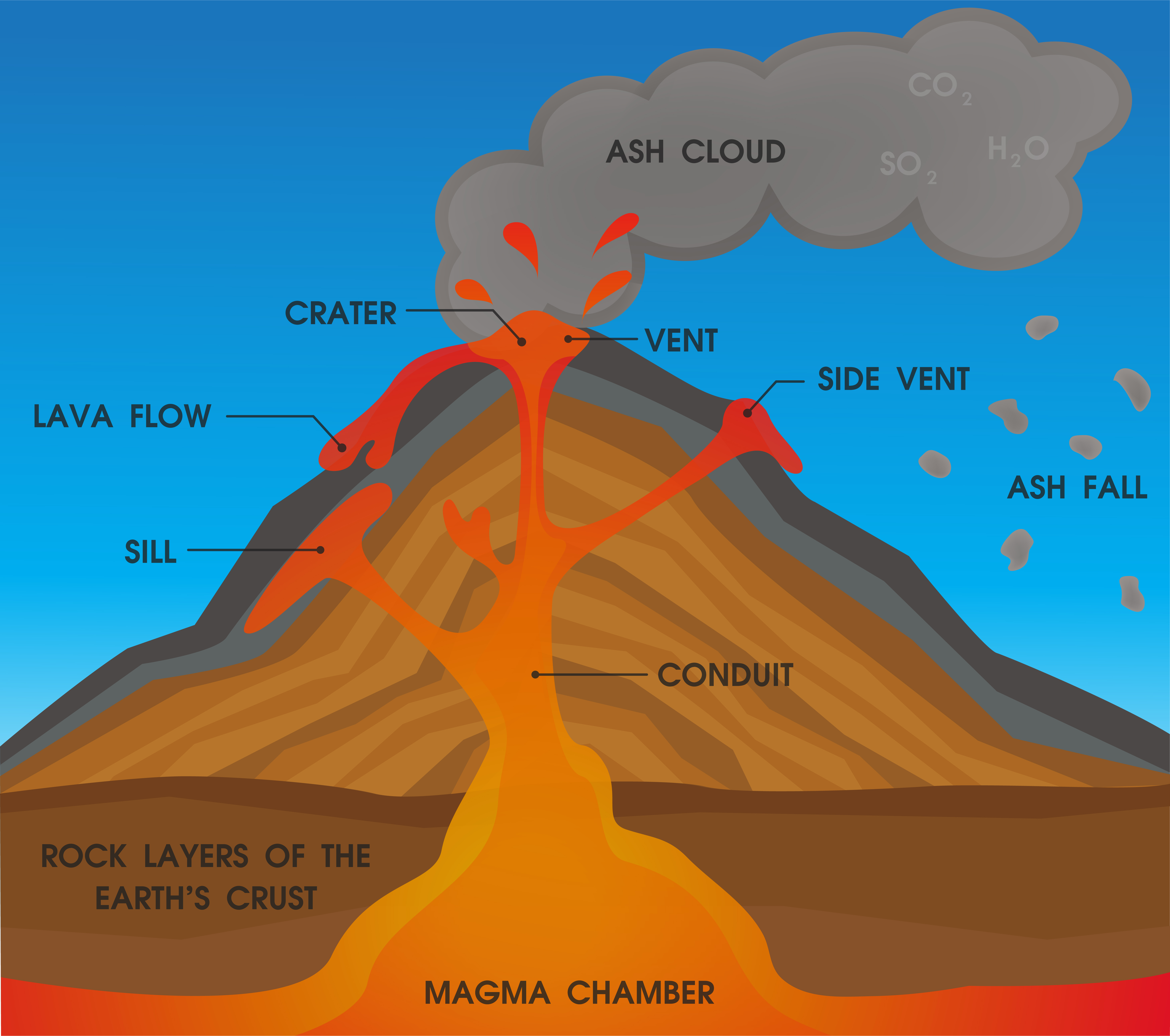
Volcano anatomy diagram. Vector Illustration. 594028 Vector Art at Vecteezy
Here are the major parts: 1) Mantle From our tour of the Earth's interior, you'll remember that the mantle is the area of molten rock directly below the Earth's crust. This is where all the fun begins. Rock that is under intense heat and pressure circulates here. 2) Magma Chamber